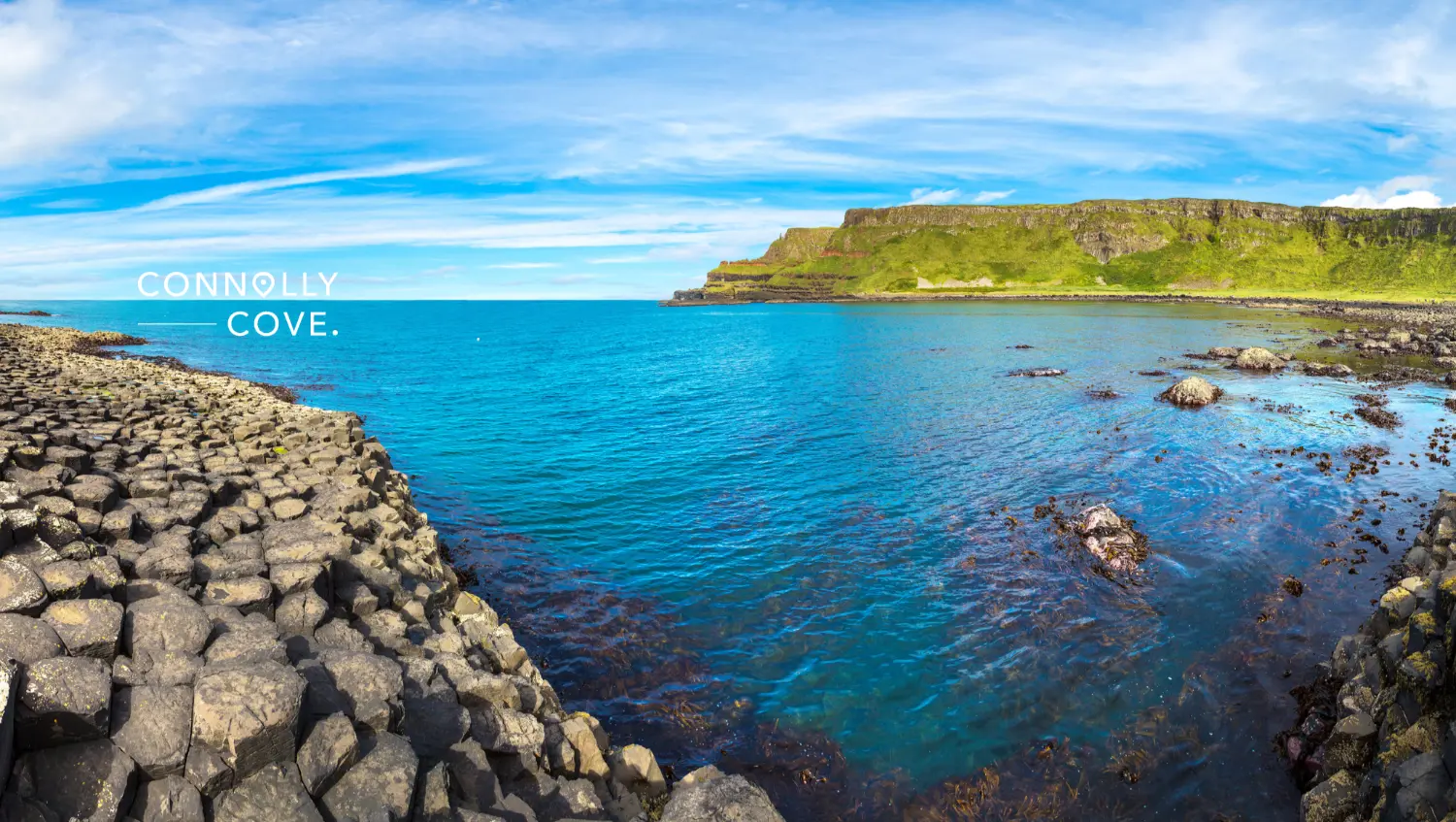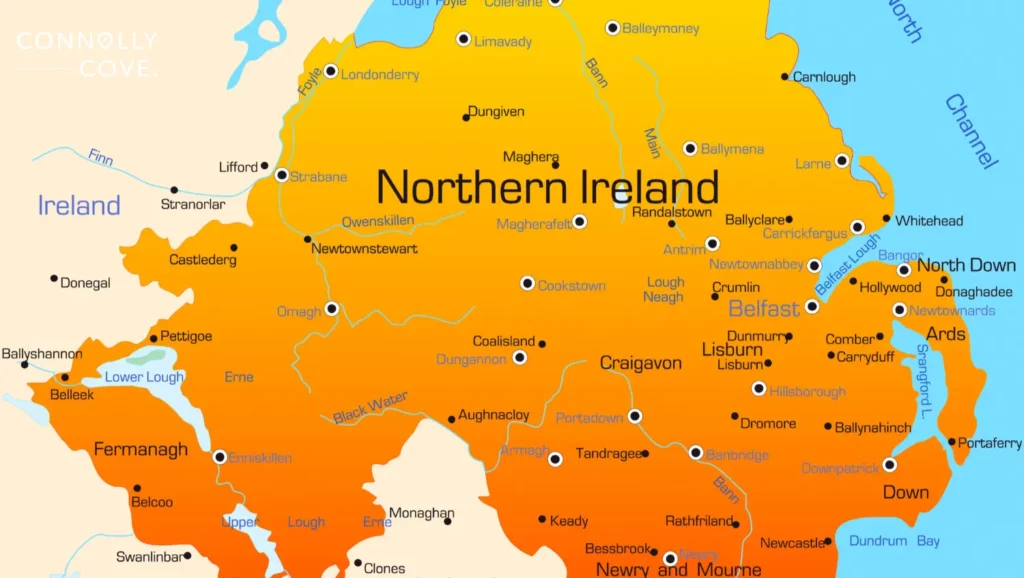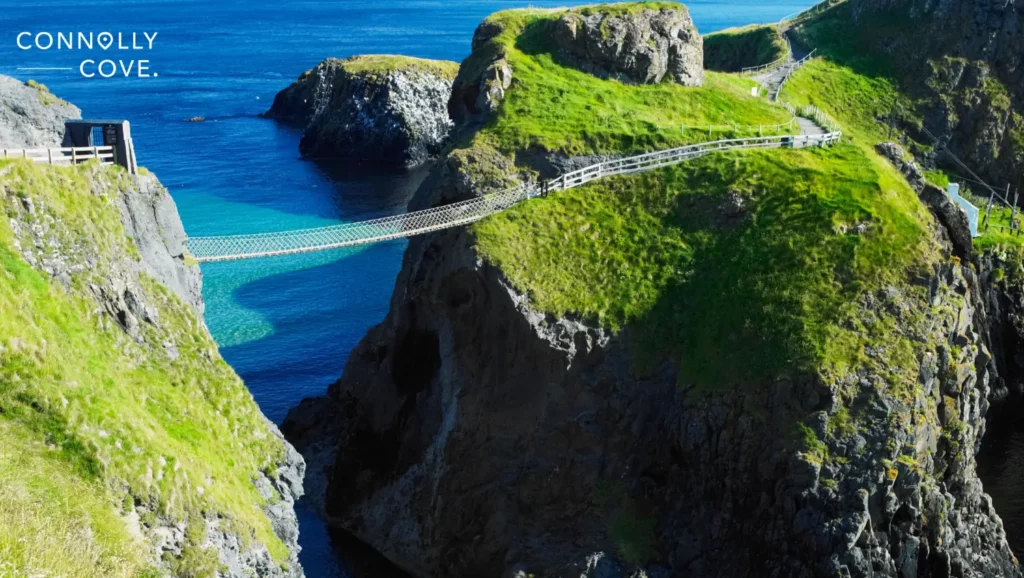A Comprehensive Overview of the History of Northern Ireland

Updated On: December 19, 2023 by Eman Sameh
Step onto the emerald shores of Northern Ireland and prepare to be swept away on a journey through time. This land, where rugged coastlines kiss the Irish Sea and rolling hills cradle ancient myths, boasts a history as rich and layered as its dramatic landscapes.
Imagine yourself amidst the whispers of Gaelic kingdoms, where Celtic warriors once clashed and bards wove tales of bravery and magic. Feel the echoes of Viking raids that carved their mark on the land, leaving behind a legacy of resilience etched in stone and legend. So, open your heart and mind, and let the history of Northern Ireland weave its magic upon you.
Early History of Northern Ireland

Before the lines of partition etched across the island and the echoes of the Troubles reverberated through the air, Northern Ireland existed as a land steeped in ancient mysteries and shifting identities. To understand its present, we must delve into its earliest threads, where Gaelic whispers mingle with the clang of Viking swords and the whispers of druidic rituals.
1. Gaelic Kingdoms and Celtic Whispers
Imagine emerald valleys echoing with the Gaels’ war cries, where chieftains ruled their kingdoms with iron wills and bards sang tales of bravery and magic. Around 400 BC, these Celtic tribes arrived, bringing their language, customs, and a deep connection to the land. Hillforts like Navan Fort in Armagh and Grianan of Aileach in Donegal stand as silent sentinels, whispering of a time when rituals drew power from the earth and myths danced on the wind.
2. Viking Raids and Norse Echoes
The 8th and 9th centuries saw the arrival of the Vikings, their longships carving through the Irish Sea like silver serpents. They raided, traded, and settled, leaving behind a legacy etched in place names like Strangford Lough and the Isle of Man. Norse influence seeped into the language and culture, adding a layer of ruggedness and resilience to the Northern Irish spirit.
3. Early Christianity and Monastic Life
Amidst the clashes and conquests, Christianity took root in the 5th century. Monasteries like Clonmacnoise in County Offaly became centres of learning and piety, their illuminated manuscripts and intricately carved crosses bearing witness to a burgeoning faith. This period also saw the rise of powerful figures like Saint Patrick, who, according to legend, banished snakes (symbolising paganism) from the island.
4. Norman Invasions and Shifting Power Dynamics:
In 1171, the Norman invasion brought a new chapter to Northern Ireland. Feudal land ownership systems were introduced, castles like Carrickfergus rose as symbols of Norman might, and the Gaelic-Norman aristocracy emerged, a blend of Celtic and continental influences. This period also saw the seeds of conflict sown, as the Norman presence laid the groundwork for centuries of English influence and simmering tensions between the Gaelic north and the Norman-dominated south.
5. Gaelic Reassertion and Cultural Fusion:
Despite Norman’s incursions, Gaelic culture remained vibrant. Bardic schools flourished, preserving and adapting ancient traditions. The 14th and 15th centuries witnessed a Gaelic resurgence, with figures like the O’Neill clan emerging as powerful forces. This period also saw a fascinating cultural fusion, with Gaelic and Anglo-Norman elements blending in art, literature, and music, creating a uniquely Northern Irish identity.
Tudor Reformation: Religion Rocks the Emerald Isle:
Fast forward to the history of Northern Ireland in the mid-16th century when Ireland got caught in the throes of the Tudor Reformation. The English crown declared Catholicism persona non grata, and the Church of Ireland rose. Cue the Gaelic lords and Anglo-Irish Catholics throwing a major hissy fit.
Religious tensions reach boiling point, fueling political unrest and setting the stage for centuries of conflict. But amidst the religious turmoil, a cultural gem emerges. The Bardic schools, bastions of Gaelic language and literature, flourish, preserving ancient stories and birthing new forms of poetry and prose.
The Plantation of Ulster: A Bitter Pill to Swallow
In the early 17th century, England decided to up the ante with the Plantation of Ulster. They granted swathes of land in Ulster to English and Scottish settlers, displacing Gaelic clans and fundamentally altering the region’s demographics and religious landscape. While intended to solidify English control, this move sowed the seeds for future religious and political divisions that would plague Ireland for centuries to come. But hey, at least it gave us some stunning Ulster-Scots architecture to admire, right?
What Events Led to The Partition?
As we mentioned earlier, the Plantation of Ulster controversial act saw English and Scottish settlers granted land previously held by Gaelic Irish clans. This fundamentally altered the region’s demographics and religious composition, creating a Protestant majority in Ulster and contributing to long-term sectarian tensions.
In the 17th and 18th Centuries, the Irish parliament issued the Penal Laws. These discriminatory laws aimed to restrict the rights and freedoms of Catholics, further marginalising them in political, social, and economic spheres. This fueled resentment and contributed to growing divisions between Catholics and Protestants.
Irish Home Rule Movement (19th and Early 20th Centuries)
This campaign sought self-government for all of Ireland within the United Kingdom. However, it faced strong opposition from Ulster Unionists, who feared discrimination in a Catholic-majority Ireland. This led to the 1920 Government of Ireland Act, which divided Ireland into two separate Home Rule parliaments, one for Northern Ireland and one for Southern Ireland.
Partition and the Irish Free State (1921)
This act ultimately led to the partition of Ireland, with six of Ulster’s nine counties forming Northern Ireland and the remaining three joining the newly independent Irish Free State. This division, along with unresolved issues of identity and discrimination, contributed to ongoing tensions in Northern Ireland.
Early Years of Home Rule
During the early years of home rule in Northern Ireland, tensions between Catholic nationalists and Protestant loyalists were already brewing. The Government of Ireland Act was passed in 1920, granting limited self-government to Northern Ireland.
However, this sparked resistance from both sides. The Catholic population wanted a united Ireland, while the Protestant majority sought to maintain their ties with Britain. As a result, violence and clashes between these groups became increasingly common. This marked the beginning of what would eventually escalate into the Troubles. Despite efforts for autonomy through home rule, deep-seated divisions continued to fuel unrest in Northern Ireland.
Second World War
Northern Ireland played an important role in supporting the British war effort during the Second World War. Its strategic location made it an important base for supplying troops and materials. The shipyards in Belfast were particularly significant, as they produced many naval vessels for the Royal Navy during this time. The impact of the war on Northern Ireland was profound, shaping its economy and further deepening existing divisions between Catholic nationalists and Protestant loyalists.
The Troubles
The Troubles in the History of Northern Ireland was a dark chapter in Northern Ireland’s history that raged from 1968 to 1998. It was a period of political and social conflict that lasted for decades. It began with tensions between Catholic Ireland and Protestant England, leading to violence, protests, and bombings. The impact on politics and society was profound, but eventually resolution came with the Good Friday Agreement. Today, Northern Ireland continues to overcome its complex history as it moves forward into the future.
Impact on Politics and Society
These conflicts shaped the political landscape, with divisions along religious lines influencing government decisions and policies. The Troubles also brought international attention to Northern Ireland’s struggle for peace, leading to negotiations such as the Good Friday Agreement.
This agreement aimed to establish a power-sharing government and promote reconciliation between communities. Today, Northern Ireland continues to grapple with its complex history, but efforts towards understanding, inclusivity, and peace are ongoing.
Resolution through Good Friday Agreement
The Good Friday Agreement played a crucial role in resolving the conflict in Northern Ireland. It was a peace agreement signed in 1998 between the British and Irish governments, as well as political parties from Northern Ireland.
The agreement aimed to address the key issues of power-sharing, decommissioning of weapons, human rights, and justice. Through this agreement, a devolved government was established in Northern Ireland, allowing unionists and nationalists to have a say in governing their region.
Today, efforts are being made to promote cultural diversity and inclusivity, fostering an atmosphere of tolerance and understanding. Additionally, ongoing initiatives have been aimed at commemorating the victims of the Troubles and facilitating reconciliation among communities. Tourism is also thriving, with visitors exploring historical sites like Belfast’s Titanic Quarter or experiencing the stunning natural beauty of places like Giant’s Causeway along the North Coast.
The history of Northern Ireland is a complex tale of tensions between Catholic nationalists and Protestant loyalists. The Troubles, a period of violent conflict, significantly impacted the region. Understanding this history is crucial for seeking peace and understanding in Northern Ireland today.
FAQs

1. When did the Irish War of Independence happen?
The Irish War of Independence happened between 1919 and 1921. This war fought for Irish independence from British rule and ultimately led to the establishment of the Irish Free State.
2. How did geography play a role in Irish history and the conflict between Catholics and Protestants?
In Northern Ireland, geography played a big part in creating religious conflict. Unionist-majority counties were mainly Protestant, while others had a Catholic majority.
3. What were critical events during the British colonisation of Ireland and the Irish War of Independence?
During British rule over Ireland, significant events like Bloody Sunday happened. The fight for freedom led to the formation of groups like the Irish Republican Army (IRA).
4. Can you describe what unionism means in the context of Northern Ireland’s history?
Northern Ireland’s unionism advocates for the region remaining part of the United Kingdom, rooted in historical ties, Protestant identity, and fears of a united Ireland under Catholic majority rule. In essence, it’s a belief in continued political allegiance with Britain.






